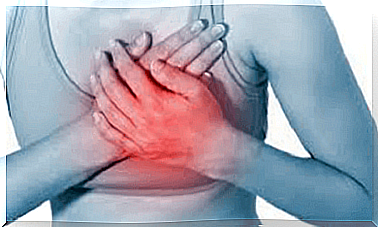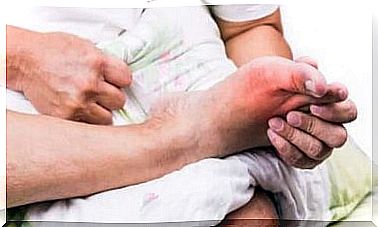What Exactly Are Electrolytes?

Athletes are probably the group of people most familiar with electrolytes. It also has to do with hydration and there is a lot of publicity about these substances. So what are electrolytes anyway?
Electrolytes are small, mostly inorganic ions that are found in the blood and also in other body fluids, as well as in cells. The great thing is that they can carry electrical charges. That means the electrolyte can dissolve in water and conduct electricity.
Electrolytes are very important for the organism. As we will see, an electrolyte imbalance can be deadly. These substances are linked to the water flow in the body. They are also linked to blood pH – acidity – and muscle activity.
The main electrolytes of the human body are sodium, chlorine, calcium, phosphorus, magnesium and potassium. For each of these, blood concentration values have been established that we can consider normal, for example:
- For potassium, normal values range between 3.5-5.3 mEq/L.
- Sodium has normal values between 136-145 mEq/L.
- For chlorine it is between 97-107 mEq/L.
Causes of an electrolyte imbalance

The normal electrolyte balance in the body fluctuates between the values mentioned above. However, this balance can also be disturbed by various factors.
Hormonal changes, diseases of the organs such as the kidneys or liver and even the use of drugs can affect these. Some of the most common causes of electrolyte imbalance include:
- Dehydration. When the body goes through a period of dehydration, it loses moisture. In addition, it also loses electrolytes. During febrile seizures or gastroenteritis with vomiting and diarrhea, it is possible to lose a lot of electrolytes.
- Malabsorption syndrome. There are pathologies that alter the process of absorption of nutrients by the intestine. When that happens, the electrolytes that are ingested may not enter the body, or only partially.
- Endocrine Diseases. Diabetes mellitus and hypothyroidism are examples of hormonal problems that disrupt the balance of the body’s internal environment.
- Chemotherapy. Cancer patients undergoing chemotherapy treatment are very prone to electrolyte imbalance. Doctors and nurses treating cancer patients should always ensure that the electrolytes lost through treatment are replaced.
- Medication. In addition to chemotherapy, there are other commonly used drugs that cause the loss of mineral substances. For example, diuretics and some corticosteroids.
- Kidney Diseases. The kidneys have to regulate the substances that leave the body. If that does not work (properly), the body can lose too much sodium, potassium, calcium, phosphorus and magnesium.
The most common electrolyte imbalances
Some electrolyte imbalances are more common than others. Some are temporary and can correct themselves automatically, while others require outside intervention to return to normal.
Many of these imbalances are not urgent or serious. However, some are complicated. The long-term consequences of this can be very serious in certain cases.
Calcium
For example, with calcium, hypocalcaemia (too little calcium in the blood) or hypercalcaemia (too much calcium in the blood) can occur. For women, hypocalcemia can increase the risk of osteoporosis when menopause begins. On the other hand, hypercalcemia can lead to kidney stones. In very severe cases, it can lead to death.
Sodium
Sodium alters the functioning of neurons, both in excess and in deficiency. Hyponatremia, which is a low sodium level, and hypernatremia, high sodium levels in the blood, cause various complaints such as irritability and confusion. In extreme cases, this can lead to seizures.
Potassium

Potassium is arguably the electrolyte that causes the most frequent emergencies. Myocardiocytes, the heart muscle cells, need specific levels of potassium to keep the rhythm of the heartbeat running smoothly. In addition, the lack of potassium in the blood is a trigger for arrhythmia, which has its own risks.
When it comes to excess potassium in the blood, although it is not urgent, you should see a specialist to detect any kidney problems. The first manifestation of renal failure can be hyperkalemia, which is an increase in the level of potassium in the blood.
Sources of Electrolytes
It is important to know where we get electrolytes from our diet. Not only to compensate for any losses, but also to be able to put together a balanced diet based on these daily needs.
Except in isotonic sports drinks that have been specially developed for good hydration, almost all foods contain a certain amount of electrolytes. You can find electrolytes in various foods. We give a few examples:
- Calcium. In addition to milk (products), many fish contain calcium, especially sardines. It is also found in spinach and almonds.
- Phosphorus. There is phosphorus in almonds, but also in other nuts such as walnuts. Lean meats and eggs are reliable sources of this electrolyte, as are dairy products such as cheese and yogurt.
- Sodium. This electrolyte is found in almost everything, but in vegetables especially in chard, celery and turnip greens.
- Magnesium: Green leafy vegetables, fish and nuts are rich in this electrolyte. There is also magnesium in dark chocolate.
- Potassium. Finally, you can find potassium in good amounts in green leafy vegetables and in many fruits such as bananas and citrus fruits.









